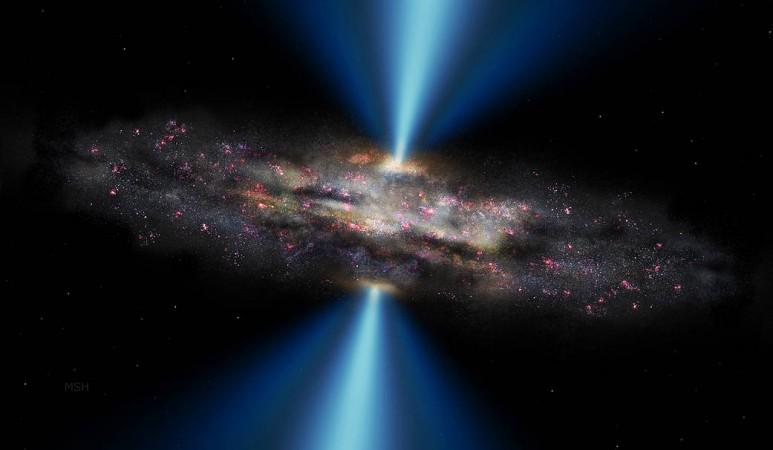
A new significant finding reveals that around 100 million black holes could be present in the Milky Way galaxy.
ALSO READ: Perseid meteor shower 2017: Date, Time, Live streaming of astronomical event
Astronomers carried out a cosmic survey to calculate and classify the mysterious dark objects existing in the cosmos.
"We think we've shown that there are as many as 100 million black holes in our galaxy," said James Bullock, Professor at University of California, Irvine (UCI), and co-author of a research paper on the subject published in the journal Monthly Notices of the Royal Astronomical Society.
This survey had begun around one and a half years ago by the university after the news that the Laser Interferometer Gravitational-Wave Observatory (LIGO) had spotted ripples in the space-time continuum created by the distant collision of two black holes, each the size of 30 Suns.
"Fundamentally, the detection of gravitational waves was a huge deal, as it was a confirmation of a key prediction of Einstein's general theory of relativity," Bullock said.
"But then we looked closer at the astrophysics of the actual result, a merger of two 30-solar-mass black holes. That was simply astounding and had us asking, 'How common are black holes of this size, and how often do they merge?'" Bullock added.
Doctoral candidate Oliver Elbert from UCI, the lead researcher of this study, said this was an attempt to understand the gravitational wave detections utilising the known data about the galaxy formation so far. Formulating a framework to understand the future events was another aim to carry out this research.
"Based on what we know about star formation in galaxies of different types, we can infer when and how many black holes formed in each galaxy," Elbert stated.
"The number of black holes of a given mass per galaxy will depend on the size of the galaxy," said Manoj Kaplinghat, Professor of Physics & Astronomy at UCI, who is of Indian origin.
The size of the galaxy matters because larger galaxies comprise of many metal rich stars whereas the smaller dwarf galaxies comprise of stars that have low metallicity.
"We have a pretty good understanding of the overall population of stars in the universe and their mass distribution as they're born, so we can tell how many black holes should have formed with 100 solar masses versus 10 solar masses," Bullock said.
"We were able to work out how many big black holes should exist, and it ended up being in the millions - way more than I anticipated," he concluded.

















